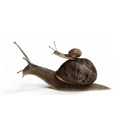Emily Green’s helpful summary of California water rights is a must-read. I was going to say it’s a must-read for anyone concerned about the California drought, but really it should be a must-read for anyone living in California.
Tag Archives: water
Shaming, reporting your neighbors, and reprimanding your friends.
[F]aced with apparent indifference to stern warnings from state leaders and media alarms, cities across California have encouraged residents to tattle on their neighbors for wasting water — and the residents have responded in droves. Sacramento, for instance, has received more than 6,000 reports of water waste this year, up twentyfold from last year.
Some drought-conscious Californians have turned not only to tattling, but also to an age-old strategy to persuade friends and neighbors to cut back: shaming. On Twitter, radio shows and elsewhere, Californians are indulging in such sports as shower-shaming (trying to embarrass a neighbor or relative who takes a leisurely wash), car-wash-shaming and lawn-shaming.
Conversations with vendors at the local farmers’ markets always touch on the drought and how it’s affecting them and neighboring farms. Some of the stories are just crushing, so driving home past thick, verdant lawns, or seeing pools of water covering the sidewalk after overwatering grates more and more.
Dry farming ≠ farming without rain.
But at times like this in California, when the drought is threatening the life of many farms, this ancient technique might be worth considering:
By tapping the moisture stored in soil to grow crops, rather than using irrigation or rainfall during the wet season, dry-land farming was a staple of agriculture for millennia in places like the Mediterranean, and much of the American West, before the rise of dams and aquifer pumping.
During the rainy season, farmers break up soil then saturated with water. Using a roller, the first few inches of the soil are compacted and later form a dry crust, or dust mulch, that seals in the moisture against evaporation.
Then again, there’s also the concept of farming on water…
